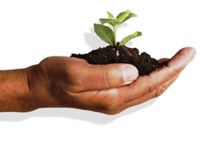Next Council Meeting
 The Official Web Site of the State of South Carolina
The Official Web Site of the State of South Carolina
Lexington County Administrative offices will be closed on December 24th, 25th, and 26th in observance of the Christmas holiday.
Lexington County administrative offices are open Monday through Friday 8 AM to 5 PM

Hundreds of thousands of individuals across the country compost in their own backyards, typically in a fenced off area or bin. Backyard composting provides a convenient way to reduce your trash and provides a valuable product that can enhance the soil and increase the growth and health of your yard.
You can set up a compost pile in a corner of your yard with few supplies. Choose a level spot about 3- to 5-feet square near a water source and preferably out of direct sunlight. Clear the area of sod and grass. When building a composting bin, such as with chicken wire, scrap wood, or cinder blocks, be sure to leave enough space for air to reach the pile. One removable side makes it easier to tend the pile.
Many foods can be composted, including vegetable trimmings, egg shells, coffee grounds with filters, and tea bags. In addition to leaves, grass, and yard clippings, vacuum cleaner lint, wool and cotton rags, sawdust, shredded newspaper, and fireplace ashes can be composted. DO NOT compost meats, dairy foods, or any fats, oil, or grease because they can attract pests.
Start the pile with a 4-inch layer of leaves, loose soil, or other coarse yard trimmings. If you are going to compost food scraps (a slightly more involved process), you should mix them with yard trimmings when adding them to the pile. Alfalfa meal or clean cat litter may be added to the pile to absorb odors. In dry weather, sprinkle water on the pile, but don't get it too soggy. Turn the pile every few weeks with a pitchfork to circulate air and distribute moisture evenly. Don't be surprised by the heat of the pile or if you see worms, both of which are part of the decomposition process. Make sure children do not play in the composting pile or bin.
In most climates, the compost is done in three to six months when it becomes a dark crumbly material that is uniform in texture. Spread it in the garden or yard beds or under the shrubbery. Compost can also be used as potting soil.
These are some items that can be put in a composting bin. Some food products should not be included because they can attract pests or compromise the quality of the compost. This list is not meant to be all-inclusive.
Materials to Include:
Fruit and vegetable scraps Egg shells Coffee grounds with filters Tea bags Fireplace ash Leaves Grass Yard clippings Vacuum cleaner lint Wool and cotton rags Sawdust Nonrecyclable paper
Materials to Exclude:
Meats Dairy foods Fats & oils (including peanut butter and mayonnaise) Grease Pet excrement Fish scraps Diseased plants Bones
This method of composting uses a container of food scraps and a special kind of earthworm known as a red wiggler. Over time, the food is replaced with worm droppings, a rich brown matter that serves as an excellent natural plant food.
Vermicomposting requires less space than normal composting methods and is ideal for classrooms, apartments, and other settings in high-density urban areas.
Through this method, red worms—not nightcrawlers or field worms found in gardens— are placed in bins with organic matter in order to break it down into a high-value compost called castings. Worm bins are easy to construct (they are also commercially available) and can be adapted to accommodate the volume of food scraps generated.
Worms will eat almost anything you would put in a typical compost pile, including food scraps, paper and plants. Vermicomposting can be ideal for apartment dwellers or small offices that want to derive some of the benefits of composting and reduce solid waste. It is frequently used in schools to teach children conservation and recycling.
Worms are sensitive to variations in climate. Extreme temperatures and direct sunlight are not healthy for the worms. The optimal temperatures for vermicomposting range from 55 °F to 77 °F. In hot, arid areas, the bin should be placed under the shade. By vermicomposting indoors, you can avoid many of the problems posed by hot or cold climates. The primary responsibility is to keep the worms alive and healthy by providing the proper conditions and sufficient food.
Vermicomposting has only a few basic requirements: worms, worm bedding (e.g., shredded newspaper, cardboard), and a bin to contain the worms and organic matter. Maintenance procedures include preparing bedding, burying garbage, and separating worms from their castings.
One pound of mature worms (approximately 800-1,000 worms) can eat up to half a pound of organic material per day. It typically takes three to four months for these worms to produce harvestable castings, which can be used as potting soil. Vermicomposting also produces compost or "worm" tea, a high-quality liquid fertilizer for houseplants or gardens.